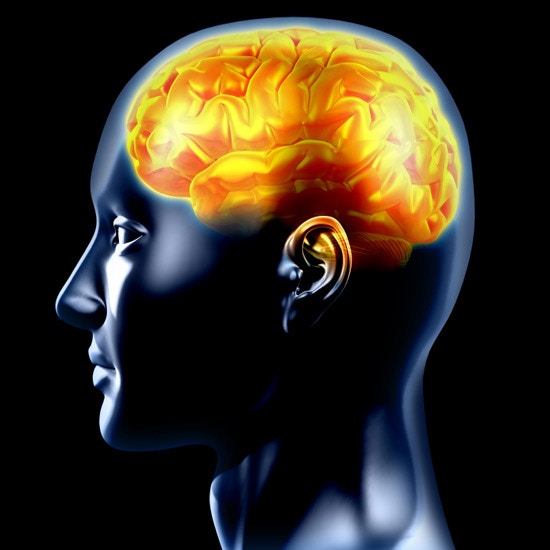
On 5 February 2010, the Simonsd Foundation gathered a panel of experts to discuss what initially appears to be a surprising and unrelated pair of subjects: autism and fever. But as SFARI director Gerald Fischbach discussed in his column last month, anecdotal reports have found that fever can improve cognitive function and behavior in individuals with autism1.
Dominick Purpura, vice president for medical affairs at the Albert Einstein College of Medicine, described some of this evidence, detailed in the numerous letters he has received from parents of children with autism. These parents consistently reported that during episodes of fever in their children, “the veil was lifted,” or less poetically, that fever seemed to alleviate some of the children’s autism symptoms.
Often detailed enough to preclude simple wishful thinking, the reports began to appear in the 1980s and have continued since. In informal surveys of parents, approximately 30 to 40 percent of children with autism appear to improve with fever. A replication of these findings in rigorously collected clinical samples will strengthen this observation. Preliminary data from the Simons Simplex Collection indicate that a similar proportion of families in the collection report improvement during febrile episodes.
What could be the neural link underscoring this surprising interaction? Some findings from clinical and basic research suggest that the alleviation of symptoms could be a result of fever’s effect on noradrenergic neurons in the locus coeruleus (LC)2. Neurons in the LC project widely to and receive projections from many regions in the brain, including areas of the hypothalamus directly involved in mediating the fever response.
What’s more, the LC itself seems to be critical in regulating fever, as inactivating the region reduces the fever response in animal models3. Perhaps most intriguingly, activation of the LC correlates with many of the functions that go awry in autism: attention and focus, emotional regulation and the ability to form and change interactions with the environment.
Despite these observations, however, many questions remain. How reliable is this relationship between fever and autism? And if it is indeed real, what could be the mechanism? Is the observed effect a result of the higher temperature, related to the accompanying immune response, both or neither? Perhaps most importantly, what do these clues tell us about potential treatments for autism?
Clinical studies: a role for temperature?
Letters from parents are notable in their consistency, but they are not the optimal means for studying the phenomenon. Andrew Zimmerman and his colleagues at the Kennedy Krieger Institute have followed 30 children with autism and found that 83 percent of the symptoms noted in the Aberrant Behavior Checklist — including irritability, stereotypy, hyperactivity and inappropriate speech — decrease during episodes of fever.
Judith Miles at the University of Missouri found similar results in a study based on detailed parent questionnaires. More than 35 percent of patients with autism spectrum disorders improved with fever. Miles reported that children who have certain behavioral and neurologic symptoms such as hyperactivity and hypotonia, and autonomic symptoms such as pain tolerance and auditory hypersensitivity, improve with fever.
Among these results, an effect on pupillary reflexes prompted further study. In a population of 29 children with autism, Miles and her collaborators found that pupil constriction in response to flashes of light is slower and smaller than in controls.
However, children who improve when they have a fever have pupil reflex measurements when they are well that are more similar to those of controls. This prompted much discussion on whether parametric measures such as pupillary reflexes can be used as a biomarker for autism and can provide clues about the neural underpinnings. The results suggest a relationship to parasympathetic tone, potentially regulated through aberrant activation of noradrenergic neurons in the LC. Activation of the LC has been shown to influence autonomic function and, more specifically, changes in pupil diameter4.
The effects seen with fever could also be a direct consequence of the rise in temperature, which has a powerful impact on neuronal functioning. Anthony Movshon from New York University noted that subtle temperature changes frequently produce dramatic and cohesive changes in behavior. Dennis Choi from Emory University added that enhanced temperature sensitivity could come about through decreases in nerve myelination. This is a particularly interesting hypothesis given that the pupillometry results could potentially be explained by decreased myelination of nerves controlling this reflex, and suggesting that demyelination should be investigated as a potential source of symptoms.
Immune relationship:
Fever, as a dialogue between the immune system and the brain, can perhaps influence symptoms of autism. Clifford Saper from Harvard University discussed how innate or foreign antigens induce prostaglandin production, particularly PGE2 which, when bound to receptors such as EP3R, results in a host of neural reactions. Notably, PGE2 activation of EP3R in the hypothalamic preoptic areas results in the fever response, including increased temperature. Prostaglandins also influence other areas of the brain. Saper suggested that prostaglandins released from the meninges overlaying the cerebral cortex and hippocampus could influence a significant number of the cognitive phenomena, including the confusion and malaise often seen during fever.
How could this alleviate autism symptoms? Saper posited that cortical neurons may be hyperactive in children with autism, and the release of prostaglandins during fever could have a calming effect on this hyperactivity.
Paul Patterson from the California Institute of Technology noted that fever is a surrogate measure of the immune reaction to infection, and he focused on the immune aspects of autism. Maternal infection is a reported risk factor for autism features in the child, and autism is associated with autoimmune disease and allergies in the mother. Some studies have also found that people with autism have peripheral immune abnormalities, as well as dysregulation of immune-related genes in the brain, activated microglia and astrocytes, and cytokine up-regulation in the brain and cerebrospinal fluid. The immune responses to peripheral infection could interact with the dysregulated immune system in an individual with autism, leading to altered behaviors.
Patterson reported that when immunostimulants such as poly(I:C) are given to pregnant mice, the pups exhibit behavioral symptoms and neuropathology reminiscent of those seen in children with autism. If immune dysregulation does play a role in autism, manipulation of cytokines or prostaglandins represents a potential therapeutic approach.
Cells and circuits:
In his presentation, Saper suggested that fever’s beneficial effect might be a circuit-related phenomenon, involving multiple hypothalamic areas as well as the LC. Gary Aston-Jones from the Medical University of South Carolina showed how the LC controls cognitive behaviors such as attention, decision execution and behavioral flexibility.
The LC projects widely across the brain and, importantly, to regions controlling cognition such as the frontal cortex. Changes in LC activity — perhaps through fever-instigated hypothalamic regulation — could produce dramatic influences on autism behaviors.
In awake animals, LC neurons fire in two modes. In the phasic mode, periodic bursts of activity produce rapid elevations in noradrenaline release that facilitates attention and focused task performance. In the tonic mode, neurons show a high baseline activity that allows flexible behavior, but can also produce excessive distractibility when the levels are too high.
Both types of activity are necessary for adaptive behavior: high baseline activity levels to facilitate searching for an optimal behavior, and high phasic activity when focusing on a selected behavior. Aston-Jones suggested that a decreased amount of tonic activity or an excessive amount of phasic activity in the LC could produce a hyper-focused, inflexible behavioral state as seen in those with autism.
LC neurons are known to couple their activity together using gap junctions — cell-to-cell channels that allow activation of one cell to strongly and rapidly influence other connected cells. Cell coupling in LC neurons produces a high level of phasic activation, resulting in heightened attentional focus. Children with autism might have higher than average LC neuron coupling, which would predispose them to a more phasic-like behavioral repertoire.
Fever might affect this phasic-locked state through a number of mechanisms, including by regulating hypothalamic projections to the LC. In this vein, Purpura noted that one should not underestimate the hypothalamic inputs to the LC, particularly from the hypocretin/orexin neurons. The widespread influence of LC, including projections to the frontal cortex, hippocampus and thalamus, suggests a possible target for initial investigations.
Nicholas Schiff from Weill Cornell Medical College noted that stimulation of the central thalamus, which receives strong noradrenergic projections from the LC, can enhance social relatedness and speech fluency in patients with focal brain injury. However, the LC is likely not the only brain area of interest. Many other regions with a relationship to the LC, such as multiple hypothalamic regions, the tuberomammilary nucleus and the cortex, all merit further investigation.
Fevered focus:
Pavel Osten from Cold Spring Harbor Laboratory pointed out the need to study neural circuit endophenotypes to bridge the gap between autism-like behaviors in animal models. Osten’s laboratory performs systematic comparisons of neural circuits in different mouse models of autism, aiming to reveal the relationship between autism genes, neural circuits and behaviors. Using high-speed, three-dimensional, two-photon microscopy to image whole brains, his team has characterized the regulation of particular genes in subsets of neurons across the entire brain.
Following the expression of the activity-regulated immediate early gene FOS, for example, they can identify every neuron in the brain that is activated by an experimental manipulation. Applying this technique in different genetic mouse models of autism will allow large-scale investigations of gene-circuit-behavior relationships.
In particular, Osten’s group is addressing how fever induced by LPS influences both the behavior of these autism animal models, as well as the activation of specific populations of interconnected neurons throughout the brain. By targeting specific mouse models and addressing specific neuronal phenotypes, his group aims to generate large amounts of data that will accelerate the understanding of the neuronal basis of autism behaviors.
Nathaniel Heintz from Rockefeller University also discussed ways to molecularly phenotype specific neural populations in mouse models of autism. Although studying circuits and specific cells in mouse models is important, Heintz noted that it’s unclear where to start. In collaboration with Paul Greengard’s laboratory at Rockefeller University, Heintz has developed a technique to target specific types of neurons for analysis.
This technique, TRAP, or translating ribosome affinity purification, allows a marker protein such as GFP to be delivered to the ribosomes of a specific neuronal population, and can be used to target specific neurons in mouse models of autism.
For example, Heintz showed preliminary data demonstrating delivery of GFP to virtually every neuron in the hypothalamus expressing the neuropeptide hypocretin. The technique’s real power is in the next step of the analysis: Researchers can extract brain tissue and selectively interrogate neurons of the targeted phenotype by precipitating them out and molecularly phenotyping them (e.g., using gene chips) in different models of autism, and in different pharmacological and behavioral conditions. For example, the technique can isolate all of the noradrenergic neurons of the LC to find any patterns of gene expression that may be altered in models of autism.
Future directions:
One clear conclusion from the meeting is that much more research is needed to investigate the relationship between fever and autism, in particular whether the fever-related responses are a result of the temperature changes, or of a neuro-immune response related to infection. Clinical tests can examine the role of temperature by monitoring the effect of safely raising temperatures (such as in a water bath) on symptoms.
Thus far, fever’s effects have typically been observed in subsets of children with high-functioning autism, possibly because the effects are more noticeable in these children. Including parametric measures, such as cytokine levels, pupil responses, and EEG signatures, as well as more thorough monitoring of fever-related changes in behavior might detect small improvements in more severe cases of autism.
Temperature and infection should both be studied, using both mouse models of autism to better understand the specific proteins, cells and circuitry involved. A deeper investigation into the LC, as well as into related structures such as the hypothalamus, is also critical. A better understanding of both the neural regions and the neuronal phenotypes involved may allow for a more focused pursuit of treatment.


